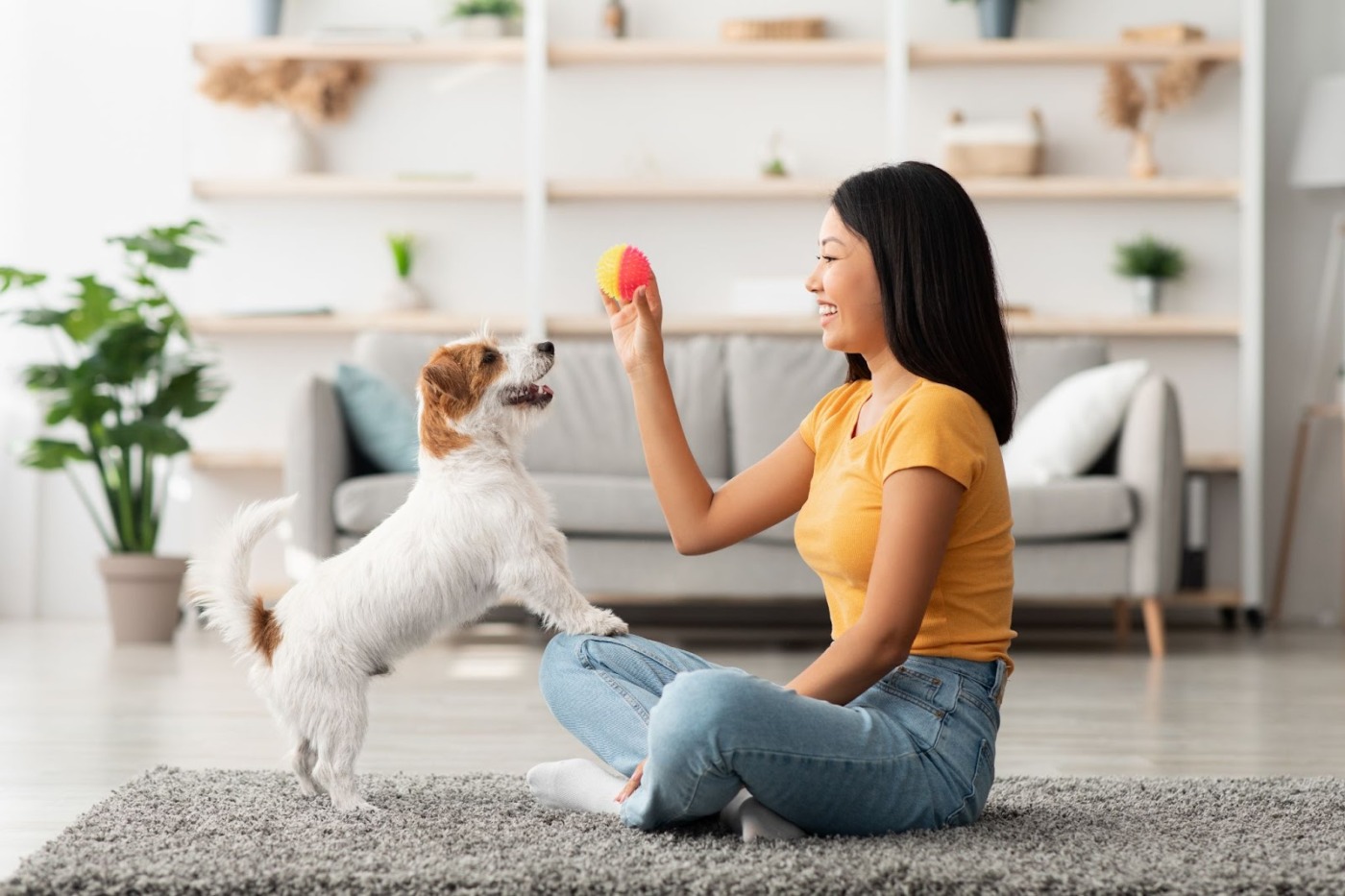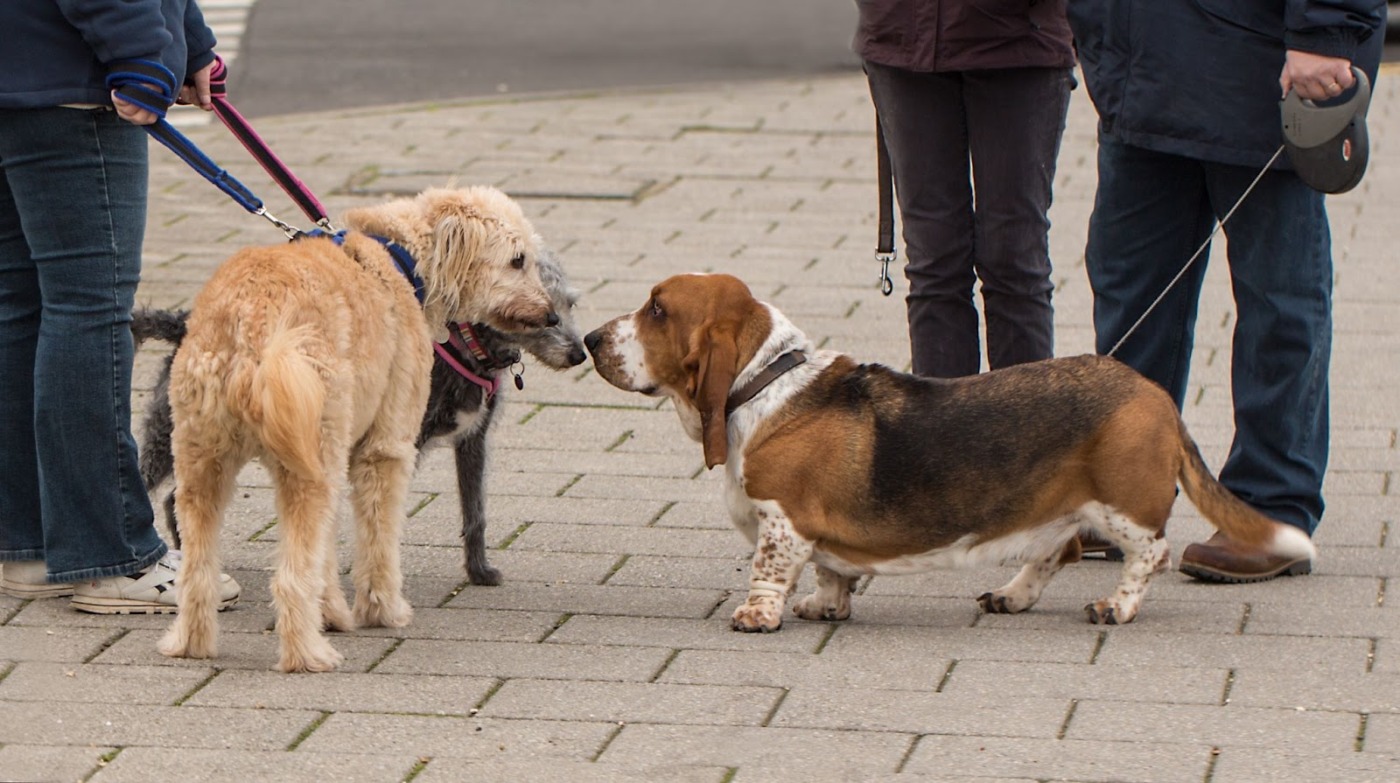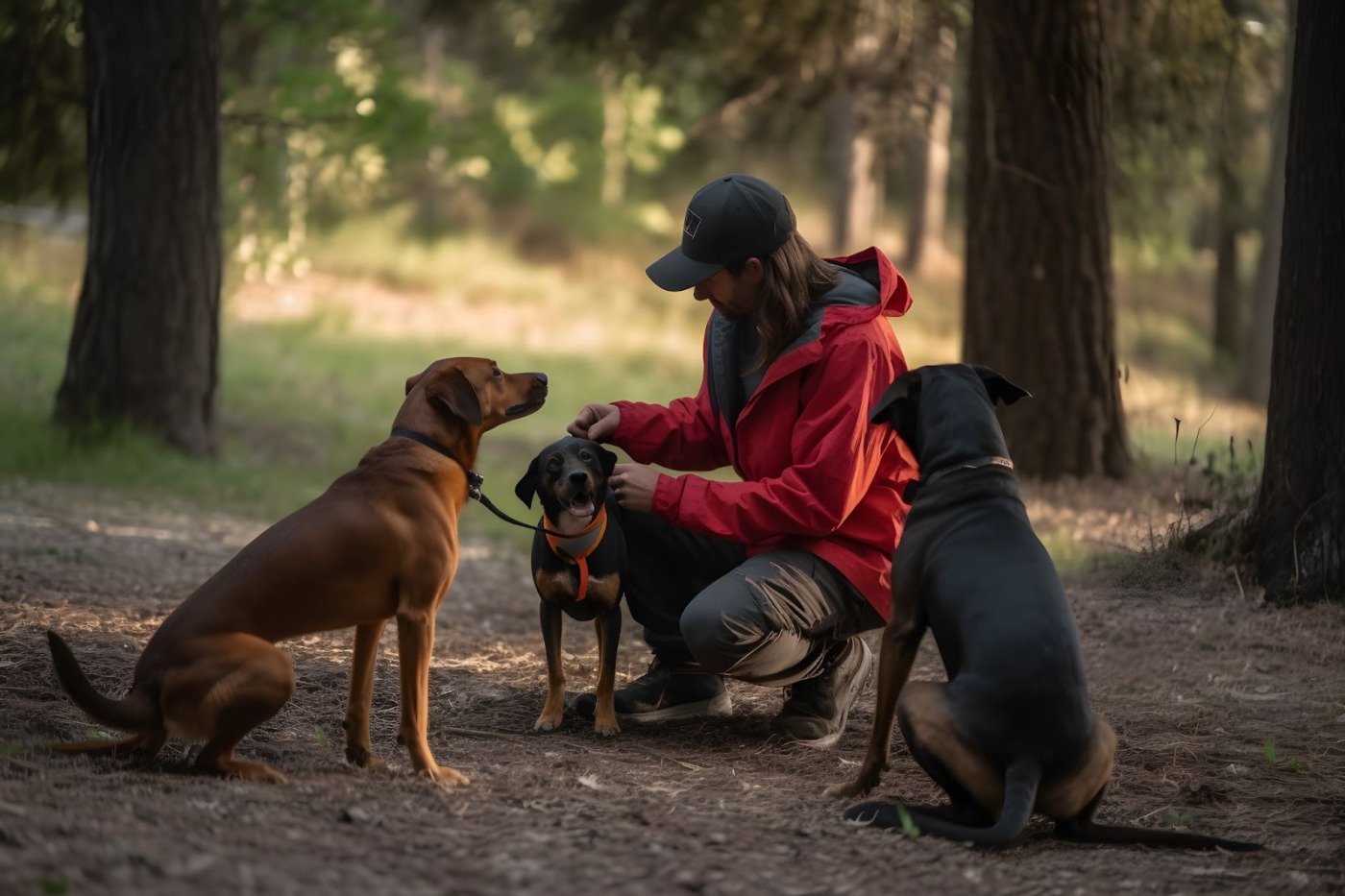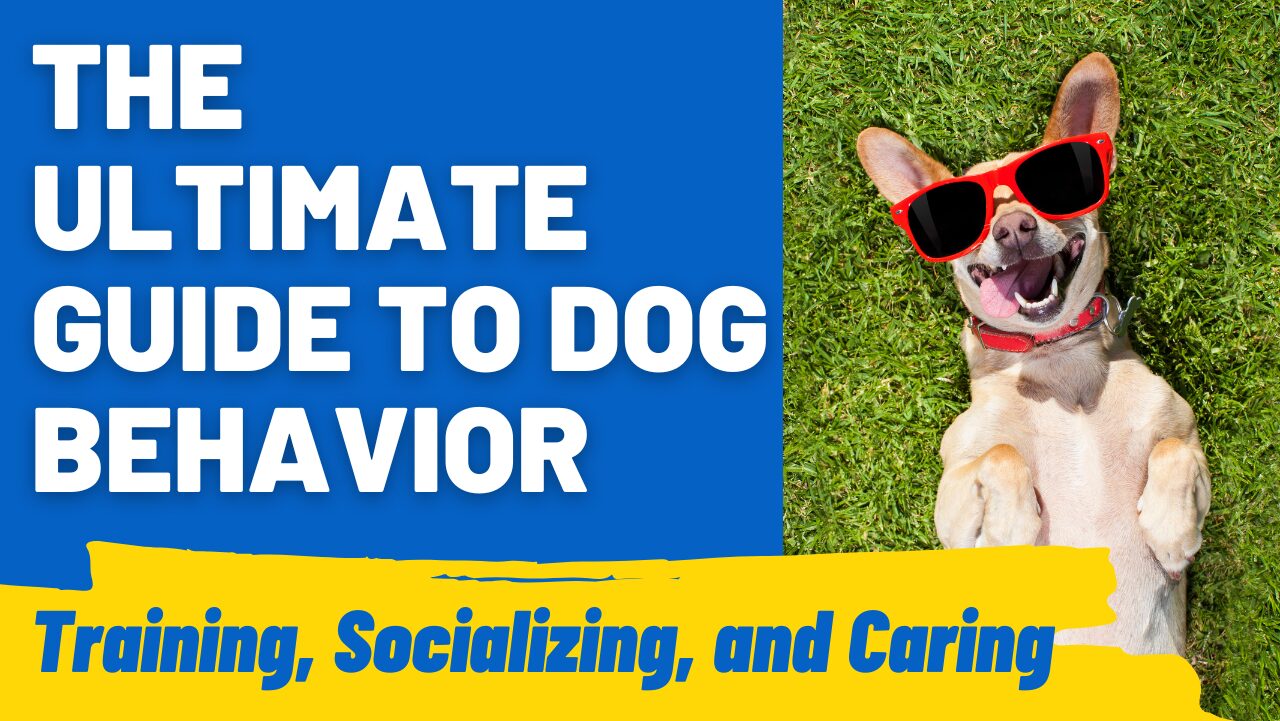The Ultimate Guide to Dog Behavior: Training, Socializing, and Caring
Just like humans, dogs exhibit a range of behaviors. You may observe your furry companion wagging its tail, rolling over, or chewing on things. But what do these behaviors mean?
If you want to foster a harmonious relationship with your pup, it’s essential to fully understand dog behavior. This means learning how to read canine body language and approach behavioral problems.
In this guide, we’ll unravel all there is to know about dog behavior, so keep reading!
What Influences Dog Behavior?
There are several factors that come into play when talking about dog behavior. Genetics, environmental factors, and the amount of training received can all explain why your dog behaves a certain way.
Can Genetics Play a Role in Your Dog’s Behavior?
Certain dog breeds are predisposed to exhibit specific behaviors. Before dogs were mainly kept as pets, most of them were required to perform tasks like herding or tracking scents.
This can explain why Border Collies tend to chase runners and bicycles or why Beagles bark when they track a new scent.
In fact, a study found that certain genes are associated with the behavior of many dog breeds. Experts analyzed DNA samples from over 200 breeds, which further confirms the role of genetics in dog behavior.
How Does Environment Affect a Dog’s Behavior?
Another factor to look into is your dog’s environment. If they live in a warm, loving home, you can expect your dog to feel safe and comfortable. This decreases the likelihood of them exhibiting unwanted behavior.
However, if their living conditions are dangerous, it may trigger their natural predatory instincts and encourage behavioral issues like aggression.
That’s why it’s important to make sure that your home is hazard-free so your dog doesn’t become stressed or exhibit fearful dog behavior.
The Role of Training in Shaping Dog Behavior
Every dog owner must know that training plays a huge role in shaping their dog’s behavior. Without training, dogs are prone to develop behavioral issues such as excessive barking, begging, chewing, and other destructive behaviors.
Training helps your pup become more confident and eager to discover its environment. Through socialization, for instance, your dog will feel at ease interacting with people and other animals without you worrying about their safety.
Moreover, early training can help in dealing with puppy behavior problems and prevent aggressive dog behavior.
How Can You Identify and Understand Canine Body Language?

Dogs communicate with humans in different ways. Sometimes, it can be hard for us to interpret what it means when they bark, whine, growl, or wag their tails.
Identifying and understanding dog body language signs is crucial for new dog owners and even experienced ones to communicate with their pets better.
Decoding Common Dog Body Language Signs
The most effective method in decoding dog body language signs is by observing their posture, movement, and facial expressions.
One of the most common body language signals is tail-wagging. Most owners will interpret this as a sign of happiness or delight. However, this is not always the case.
Tail-wagging suggests that your dog is in an emotionally aroused state, which can be out of excitement or, in other cases, frustration. If your dog is slowly wagging its tail along with its body when greeting you, it is feeling relaxed.
However, if your pup is wagging its tail faster, it could mean that it is on high alert. It’s also important to observe the tail’s position. The higher it is, the more assertive and confident your dog is. Meanwhile, a tucked tail could mean that your pup is feeling distressed.
Furthermore, your dog’s posture can also reflect its emotional state. A cowering dog is a sign that it is fearful or stressed. Meanwhile, when your dog rolls on its back and lets you rub its belly, it shows how relaxed it feels around you.
You can also learn about your dog’s state of mind by observing their eyes. If they look like they’re squinting, they are happy, but if you see them looking intently, they might be feeling on guard or aggressive.
Dog Body Language Tips for Safe Interactions
When reading a dog’s body language, it’s effective to look at all the signals your pooch is giving. This will help you understand your pet better and have safe interactions with other pooches.
If you own several dogs at home, note how they interact with each other. Observe their behavior with other dogs as well when you take them out for a stroll or to the dog park.
You should also know how to approach other dogs when they are feeling shy, excited, or aggressive. When greeting a shy dog, let them come to you, and don’t force the interaction. Kneel down and face the dog sideways.
Meanwhile, if you’re meeting an excited dog, stay calm and greet them only when they’re calm and not wanting to jump on you. When a dog starts charging at you, you should stop moving and avoid eye contact. Turn your back or talk to the dog calmly.
Practice these canine body language tips every day to get a better grasp of your dog’s way of communicating.
What Are Common Dog Behavior Problems and Their Solutions?
Behavioral problems in dogs may manifest in various ways. It can be extremely problematic for owners who don’t know how to handle their dog’s behavior.
To help bring awareness, some of the most common behavioral issues in dogs and their solutions are highlighted below:
| Behavioral Problem | Potential Causes | Effective Solutions |
| Aggression | Fear, territoriality, lack of socialization, pain | Behavior modification training, desensitization, positive reinforcement, professional help |
| Separation Anxiety | Fear of abandonment, lack of training, change in routine | Gradual desensitization, crate training, leaving comforting items, behavior modification |
| Excessive Barking | Attention-seeking, boredom, fear, territoriality | Increased exercise, positive reinforcement training, distraction techniques |
| Destructive Chewing | Boredom, teething, anxiety, lack of appropriate toys | Providing chew toys, mental stimulation, training, confinement when unsupervised |
| Jumping Up | Excitement, seeking attention, lack of training | Ignore the behavior, train for an alternate behavior (e.g., sitting), reward calm behavior |
| Digging | Boredom, instinctual behavior, seeking attention | Provide designated digging areas, increase exercise, discourage digging in unwanted areas |
| Begging | Reinforced behavior (rewarded with food), lack of boundaries | Ignore begging, establish consistent rules, redirect to appropriate behaviors |
As you can see, behavioral problems such as aggression, barking, chewing, begging, and others can be caused by different factors. Providing the correct solution can ensure a well-behaved pup.
Dealing with Aggressive Dog Behavior
Aggressive behavior in dogs is often seen as growling, snapping, biting, or baring teeth. This behavior may be directed at people, other animals, or even inanimate objects.
When handling aggressive puppies or dogs, it’s important to identify the underlying cause. In most cases, aggressive dogs are trying to protect their territory or possession (e.g., food, bones, chew toys).
Positive reinforcement techniques can be used to deal with aggressive dog behavior. When your dog shows rough behavior during your walks, stop and wait until it is calm. Then, reward your pup when it complies and continue your walk session.
Socializing your dog with new people and other well-behaved animals is also an effective method for them to get used to their presence. However, in severe cases, it’s best to consult an expert.
Understanding and Managing Separation Anxiety in Dogs
When dogs are extremely attached to their owner, they may develop separation anxiety when they’re gone. The anxious dog may vocalize a lot, exhibit excessive chewing, or eliminate inside the house.
Separation anxiety in dogs can be managed by establishing a routine and providing mentally stimulating activities that you can do together within a specific time of the day.
Additionally, you should reward your dog when it is spending time in its crate. You can place a Play Mat and some Puzzle Toys from Hound Games inside to effectively reinforce this behavior.
Handling Barking, Chewing, and Other Puppy Behavior Problems
Behavioral issues such as barking, chewing, jumping, chasing, and digging also need to be addressed as soon as your dog starts exhibiting early signs of the problem.
When dealing with barking dogs, you can use a Dog Bark Corrector alongside positive reinforcement training. If you have a dog that is prone to chewing, chasing, or digging, provide toys, enough exercise, and other enriching activities.
How to Socialize Your Dog Effectively?

Socializing your dog is an integral part of dog training. It is an important tool in developing good behavior and ensuring that they are well-adjusted and sociable.
Through socialization, your dog can be exposed to different stimuli, which can help them become more confident and curious about the world.
Steps for Socializing Puppies and Adult Dogs
Whether you have a puppy or an adult dog, these steps will surely help build your pup’s confidence and develop their social skills.
- Go on daily walks. Once your puppy or older dog learned basic obedience skills, you can take them out on daily walks to expose them to new sights, sounds, and smells.
- Let them meet other humans. You can slowly introduce them to other people by inviting a friend over to your house and reward them when they are calm and show eagerness to interact.
- Introduce them to other dogs. As you go on your daily walks, you can let them befriend other dogs they meet along the way, preferably those similar to their age and energy level.
- Take them to new places. To further expose them to different scenarios, take your dog to a new place, like a dog park, where they can socialize with other pups.
- Match their pace. When socializing, it’s important to not force anything and let your dog take the lead. If they feel distressed, take a break and continue another day.
Overcoming Fearful Dog Behavior Through Socialization
Some dogs may demonstrate fearful dog behavior as a response to certain stimuli. This can be people, sounds, or specific situations. A fearful dog may be seen tucking its tail, trembling or shaking, licking their lips, or glaring its teeth.
If your dog is showing signs of fearful behavior, you can work on it through socialization. By gradually introducing your dog to new people and other pups, it can gain more confidence and be open to new experiences outside of its comfort zone.
Understanding Specialized Dog Behavior Issues
Aside from the common behavioral problems in dogs, there may be behaviors that indicate more complex disorders. Some of these include fear aggression, territorial behaviors, phobias, and obsessive-compulsive disorder (OCD).
Addressing Fear Aggression and Territorial Behavior in Dogs
Fear aggression in dogs is an emotional response that is usually triggered when they perceive a threat. To address this issue, you must remove the dog from the situation or the trigger that incites fear and use positive reinforcement techniques.
Another behavioral issue that some dogs exhibit is canine territorial behavior. This is triggered when a person or another animal approaches its property. This can be solved through obedience training and socialization, which can help with impulse control.
Coping with Canine Phobias and Obsessive-Compulsive Disorder
Like humans, dogs can also develop certain phobias due to past traumatic experiences. Noise phobia in dogs, for instance, is very common. This can make your dog sensitive to loud noises like fireworks and thunderstorms.
Other dogs may also develop canine obsessive-compulsive disorder (CCD), which can manifest as flank sucking, constant licking, spinning, chasing its tail, eating dirt, excessive drinking of water, or even self-mutilation.
These compulsions are repeated uncontrollably by the dog throughout the day. In most cases, it may result from a lack of mental stimulation and exercise.
However, reports show that certain breeds, like German Shepherds and Bull Terriers, are prone to spinning and tail-chasing. Meanwhile, a genetic link has been identified in Doberman Pinschers and flank sucking.
Canine phobias and disorders like CCD should be addressed by taking your dog to a veterinarian or a behaviorist who can prescribe medication or perform behavior modification techniques.
Advanced Dog Behavior Modification Tips

In severe cases where your dog’s behavioral issues become unmanageable, advanced behavior modification tips must be applied. This treatment approach is normally done by trainers, veterinarians, or behaviorists to change undesirable behaviors.
Reactive Dog Training: Techniques and Tips
Some pups easily react to common stimuli. These reactive dogs may not have been properly socialized and trained. Although reactivity is not the same as aggression, a reactive dog may have a tendency to become aggressive.
Fortunately, this can be resolved through reactive dog training. This involves letting your reactive dog observe the trigger from a distance by walking them using a long leash in an open area. In this way, your dog can still move freely and stay relaxed around the trigger.
Handling Resource Guarding and Dominance Issues
Dogs can be possessive about their food and toys. They may bark, growl, or snarl at anyone who approaches them while eating or playing. This behavior is called resource guarding, and it often results from a lack of training or dominance issues.
Resource guarding in canines can be managed through an advanced behavioral modification technique called desensitization. This involves gradually training your dog to get used to your presence during mealtime or when playing with its favorite toy.
The Role of Health in Dog Behavior
When it comes to dog behavior, you shouldn’t ignore the influence of your dog’s overall physical health. Certain health issues can cause your dog to show unusual behaviors, so it’s important to seek veterinary care to rule out any medical condition.
Canine Reproductive Behavior and Its Management
Certain behaviors arise once your dog hits puberty. Initially, female dogs may become aggressive towards male dogs that attempt to mount them. On the other hand, male dogs may show inappropriate mounting and thrusting behavior.
Canine reproductive behavior can be troublesome for owners. The best approach is to talk to your veterinarian about neutering or spaying your dog. This will limit your pup’s sexual interest and eliminate behaviors associated with it.
Recognizing and Addressing Noise Phobia in Dogs
As mentioned, noise phobia is quite common in dogs. You can recognize if your dog has one if it shows agitated behavior and attempts to hide once it hears loud noises like vehicles, thunder, or firecrackers.
Your veterinarian may suggest preventing exposure to the noise source by soundproofing your dog’s area, playing soft music, and giving your pooch a toy to keep occupied. Medication may also be prescribed along with behavior modification methods.
Conclusion
Understanding dog behavior is a crucial step in dog ownership. If you can easily read your dog’s body language, you can train them more effectively and provide the care they need.
Learning about your dog’s behavior is a continuous process. It’s important to exercise patience and be understanding of your dog’s changing behavior. There’s always an explanation for why they act a certain way.
If you encounter some behavioral issues, you must never resort to harmful punishment. Instead, reinforce good behavior through positive reinforcement methods and behavior modification techniques. You can also seek professional help if necessary.

